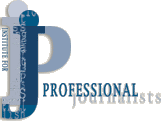Internationalizing a Journalism Curriculum Using Distance Education Technology: A Pilot Project Between Lebanese American University and the University of Missouri-Columbia
October 26-29, 1999, Beirut, Lebanon
— by Magda Abu-Fadil (Lebanese American Univeristy) and Roger Gafke (University of Missouri-Columbia)
The Problem
There is wide recognition among Arab and U.S. journalism educators that in a world in which information and the economy are global, students must function effectively as journalists among persons different from themselves. The need for improved intercultural relations is urgent. (Westwood) Educators believe students will need more than their birth language to gather and deliver the news.(Gafke, Naeger) Students will also have to recognize that their communications can create cultural conflict. (van Raaij)
In the United States the problem is particularly severe. First, few students have second-language skills. (Gafke, Naeger) About 30 percent of the American-born undergraduate students in journalism at the University of Missouri-Columbia have a minor in a second language. Second, few students have traveled outside the United States. About 40 percent of journalism undergraduates at Missouri have traveled overseas by the time they graduate. That percentage is far higher than for all students at the university. Third, vestiges of a segregated society, still leave many students with only superficial interaction with racial or ethnic groups different from their own. Fourth, the awareness and image of the Arab-speaking world is particularly stereotyped and superficial. (Kamlipour) (Wilkins)
Journalism educators in the Arabic-speaking world face similar problems. Both those teaching primarily in English and those teaching primarily in Arabic express the need to find ways to help students function in a second or even third language for gathering, writing and editing the news. (Gafke, Naeger)
Most Lebanese American University students function in at least two languages and are frequently tri-lingual, but they often mix the languages when speaking or mix linguistic and cultural contexts when writing. Moreover, they often let more flowery and elaborate writing styles from their Arabic or French educational backgrounds creep into their English journalism assignments, thereby rendering their copy cumbersome and requiring heavy editing.
There is a rich cultural diversity in the Arab World that brings students in contact with persons different from themselves more readily than in the United States, given the geographic proximity to other parts of the world and often historical links to other countries. That diversity contains its own problem. It is often characterized by a partisanship and advocacy for one's own point of view that replaces the pluralistic tradition of reporting that is the standard for international journalism. Senior editors say much needs to be done by educators to increase the professional competence (independence and objectivity) of journalism graduates. (Missouri-Birzeit Group)
Competition for often-scarce academic resources and program inertia often limit the ability of journalism faculty to achieve the goal of internationalizing the curriculum. Some programs have few faculty with international experience, and curriculum committees often resist adding new courses or requirements if it means dropping current ones.
However, the rapidly developing communications technologies - Internet, digital audio and video, and computer-based training systems - offer journalism programs new opportunities to expand the international aspects of their programs at relatively low cost. These technologies permit a department to bring faculty with special talents into contact with their own students and enable faculty to link their students with students in different parts of the world for joint projects.
This paper reports on a small step toward internationalizing a curriculum with distance education technologies. In the spring semester of 1999, the authors exchanged editing services for student-produced news stories in their reporting classes using the World Wide Web and e-mail. The editing was the next step in a project outlined at the AUSACE conference in Cairo, September 1998.(Gafke, Naeger)

